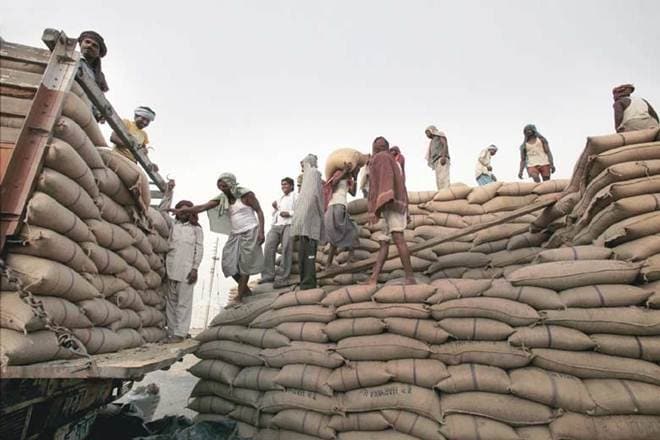By Prabhudatta Mishra
The steady and steep rise in borrowings by the Food Corporation of India (FCI) over the past few years to keep its operations uninterrupted by a liquidity crunch caused by delayed/inadequate release of funds by the government is inflating an already high food subsidy bill even further. As the chart shows, stepped-up FCI borrowings, though it largely comprises relatively low-cost National Small Savings Fund loans, have still led to a steep rise in FCI’s debt servicing cost.
Given that the Centre is the guarantor for these loans, its interest cost on these FCI loans is now a tidy sum and increasingly a significant element of the economic cost of grains. According to a source, 6% of the economic cost of the National Food Security Act (NFSA) rice is now on account of the interest on FCI debt. A similar share of the economic cost of NFSA wheat and coarse cereals is also due to the interest cost. The economic cost includes purchase cost of grain at minimum support price (72% for rice), assorted mandi taxes (9%), storage and freight (4%), etc.

Of course, the food subsidy bill, which saw a sudden jump after the launch of NFSA in 2013, isn’t rising fast enough to increase its share in the gross domestic product (GDP), but it is still a huge and sticky subsidy expenditure; the fact that the Centre is increasingly resorting to high off-budget borrowings to finance it makes the viability of the scheme tenuous. The question of the viability of the scheme under the current parameters arises even as its efficacy in alleviating the hardships of the poor has been proven once again during the lockdown period.
Thanks to the open-ended procurement policy that resulted in costly piling up of grain stocks, the FCI’s debt stood at a whopping Rs 3.3 lakh crore at FY20 end. The total stocks of rice (including as paddy) and wheat in the central pool was about 97.27 million tonne (MT) as on June 1. The stocks might have since come down a bit but could still be around 93 MT on July 1, much higher than buffer norm of 41.12 MT.
The central issue price of grains remained unchanged since 2013 even though their economic cost has risen. In 202-21, the economic cost of rice, for instance, is seen at Rs 3,727/quintal against the issue price of Rs 300/quintal.
Agriculture economist Ashok Gulati suggests that the government unlock this unproductive capital (excess stocks in the central pool of FCI) by liquidating grains in open market operations at whatever reasonable market price it can get. “It will not recover its full economic cost, as they are much higher than the prevailing market prices. But, by not liquidating it, the FCI will keep incurring unnecessary interest costs of about Rs 8,000-10,000 crore per annum,” Gulati wrote in FE recently. It is believed that liquidating the excess stocks will fetch the corporation close to Rs 1 lakh crore.
With the recent ordinance easing inter-state farm produce trade, the government could save a substantial amount in procurement cost if FCI and state-level agencies are allowed to buy directly from farmers instead of the mandi route, experts feel. The Centre has clarified that the FCI will continue to buy paddy and wheat at MSPs. The role of FCI will not be changed after the reforms and it would continue to buy the grains for the central pool, agriculture secretary Sanjay Agarwal said in a webinar on June 25.
“The need for a central agency to manage the food grains will remain, which is demonstrated time and again during calamities. Despite such a fear amid Covid-19, the staff of FCI ensured smooth supply of food grains, including selling sizable stocks in the open market during lockdown,” DV Prasad, chairman and managing director of FCI, told FE.
The food subsidy component routed via the FCI under the NFSA is estimated to increase to Rs 1.75 lakh crore in FY21, from an earlier estimate of Rs 1.4 lakh crore. This is because the government decided to distribute three months of ration to 81 crore NFSA beneficiaries free of cost during April-June under the Prime Minister Garib Kalyan Yojana (PMGKY), at a cost of Rs 46,000 crore, of which Rs 35,000 crore is to be routed via FCI.
In the current fiscal, the budget outlay (BE) for FCI for food subsidy is fixed at just Rs 77,983 crore while another Rs 1.36 lakh crore has been provisioned under the NSSF loan. As much as Rs 68,400 crore out of the NSSF loan has been accounted for, to repay arrears and the balance Rs 67,600 crore is meant for meeting this year’s requirements.


